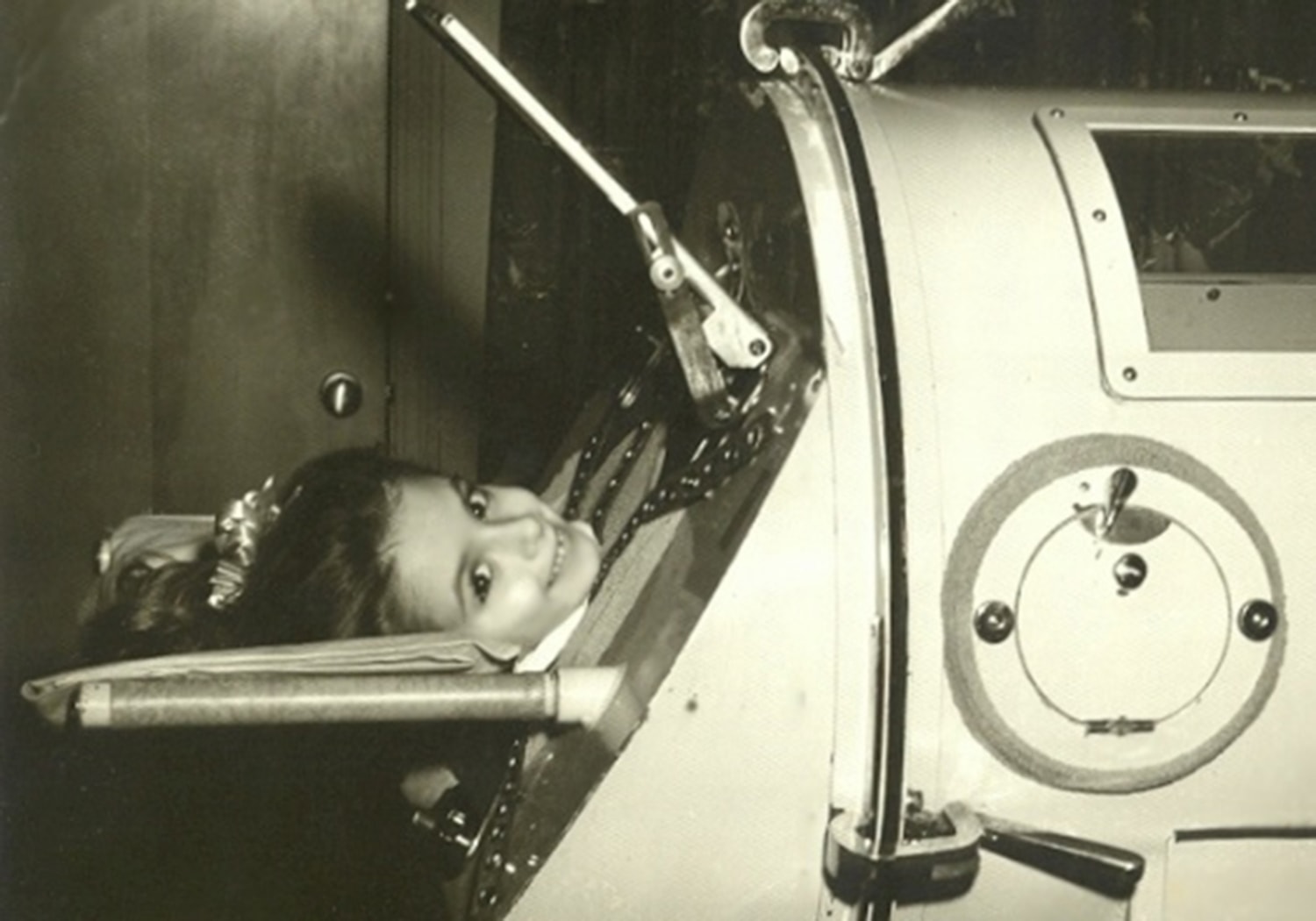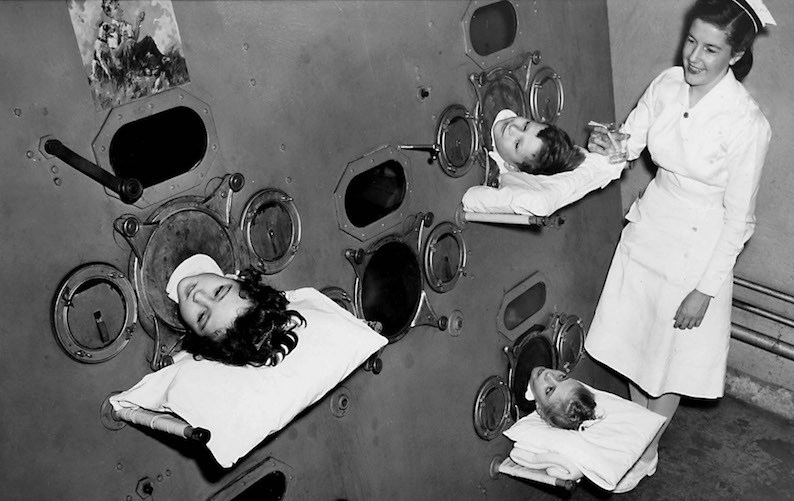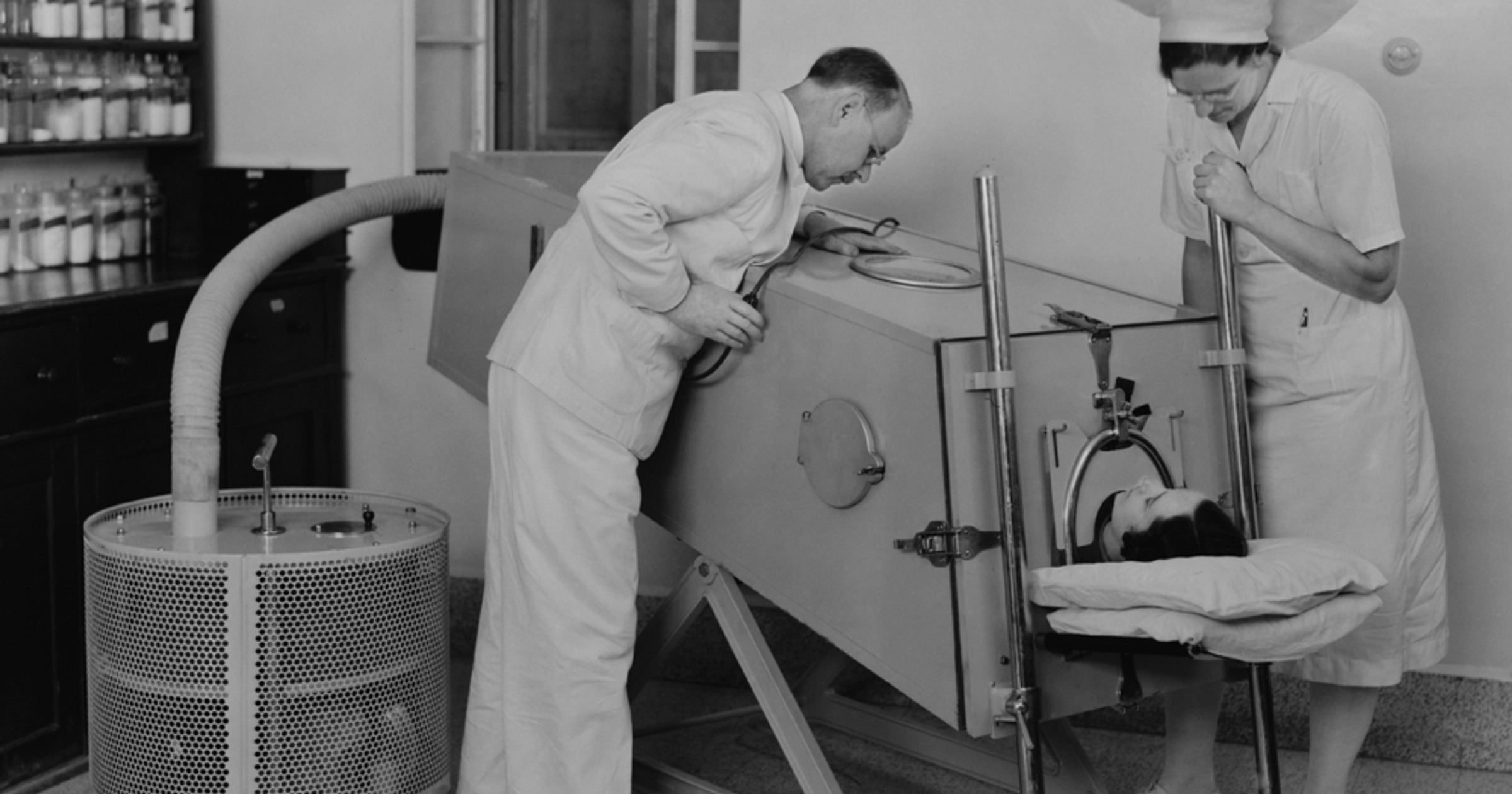In the mid-20th century, polio was one of the most feared diseases across the globe. It struck suddenly, spreading through contaminated water and food, and left thousands of people—mostly children—paralyzed every year. In the most severe cases, the virus attacked the nervous system, paralyzing the muscles responsible for breathing. For those children, survival depended on a remarkable yet confining machine known as the iron lung.
A haunting photograph from the 1950s shows a row of children lying inside these enormous cylindrical respirators, their small faces framed by metal and glass. The image stands as one of the most powerful representations of the polio era—a time when medical innovation was the only thing standing between life and death for many.

How the Iron Lung Saved Lives
The iron lung, also called a “negative pressure ventilator,” worked by creating pressure changes that forced air in and out of the lungs. When the machine generated negative pressure around the patient’s chest, it caused their lungs to expand, allowing air to flow in. When the pressure was released, the lungs contracted, pushing air out—essentially mimicking the body’s natural breathing process.
For patients whose diaphragm muscles were paralyzed by the poliovirus, this mechanical process was lifesaving. However, life inside an iron lung was deeply restrictive. Patients, many of them children, could not move freely and relied on nurses and caregivers for every daily need—eating, reading, or even scratching an itch. Some children stayed in iron lungs for weeks or months, while others required them for decades.
Despite these challenges, the iron lung represented one of the earliest large-scale examples of mechanical ventilation, paving the way for the advanced respirators used in modern hospitals today.
Polio’s Global Impact
Before the development of a vaccine, polio outbreaks caused widespread fear. During the 1940s and early 1950s, annual epidemics struck the United States and other countries, closing public pools, playgrounds, and schools. According to the U.S. Centers for Disease Control and Prevention (CDC), polio infected more than 35,000 Americans each year at its peak. Hospitals were filled with children immobilized by paralysis, and entire wards were dedicated to rows of iron lungs.
Polio was unpredictable—it could cause no symptoms in some people but result in permanent disability or death in others. The disease often spread silently, infecting communities before anyone realized an outbreak had begun.
The Vaccine That Changed Everything
In 1955, Dr. Jonas Salk introduced the first inactivated polio vaccine (IPV) after years of rigorous scientific research and clinical trials. This breakthrough marked a turning point in public health. The vaccine was safe, effective, and easy to administer. Within a few years of widespread vaccination campaigns, the number of new polio cases began to decline rapidly.
Later, Dr. Albert Sabin developed the oral polio vaccine (OPV), which was easier to distribute and helped protect millions more, particularly in developing countries. With the combined global effort of organizations such as the World Health Organization (WHO), UNICEF, and the Global Polio Eradication Initiative (GPEI), polio cases fell by more than 99% worldwide from 1988 to the early 2000s.

The Near Eradication of Polio
Today, thanks to continuous vaccination campaigns, polio has been eradicated in most parts of the world. According to WHO data, only a few countries—such as Afghanistan and Pakistan—still report isolated cases of wild poliovirus. Global health authorities continue to work toward full eradication, ensuring that the virus never resurfaces.
The success of the polio vaccine remains one of the greatest achievements in medical history. It not only eliminated a disease that once paralyzed hundreds of thousands of children each year but also inspired future vaccination programs that have saved countless lives from other infectious diseases.
Remembering the Past Through the Iron Lung
The photograph of children in iron lungs serves as a reminder of what life was like before vaccines changed the course of history. Each face in that image represents a child whose life depended on human innovation and compassion. Nurses and caregivers dedicated their days and nights to ensuring the comfort of these young patients, often forming close emotional bonds that lasted a lifetime.
While modern medical technology has advanced far beyond the iron lung, a few individuals who survived polio in the 1950s still use them today. Their stories have been documented in medical journals and historical archives, symbolizing endurance and the human spirit’s ability to adapt even under the most restrictive circumstances.

Lessons from History
This haunting image and the story behind it remind us of the critical importance of vaccines and global health initiatives. Diseases like polio may feel like relics of the past, but they serve as a warning of what can happen when preventable illnesses return due to lapses in vaccination coverage.
The eradication of polio also demonstrates the power of international cooperation. Decades of coordinated efforts, funding, and education have nearly wiped out a virus that once terrorized families worldwide. It shows that science, when combined with compassion and persistence, can truly change the course of humanity.
A Legacy of Hope
Today, when we see the black-and-white photographs of those children encased in iron lungs, we are reminded not just of suffering, but also of progress. The image reflects both the fragility and the resilience of human life. It also celebrates how far medical science has come—from mechanical respirators to global immunization networks.
The story of polio is ultimately a story of hope. It is about scientists who refused to give up, parents who believed in medicine, and children whose strength inspired change. It is a reminder that every breakthrough in public health—every vaccine, every treatment—builds on the lessons learned from moments like these.
Conclusion
The 1950 photograph of children in iron lungs captures a defining moment in medical history—a time when innovation saved lives even before a cure existed. Thanks to the work of researchers like Jonas Salk and the continued global effort to eradicate polio, such images belong to history rather than the present.
As we look back on this chapter of human resilience, we are reminded of the extraordinary progress made possible through science, compassion, and the unwavering pursuit of a healthier world.
Sources:
-
Centers for Disease Control and Prevention (CDC) – History of Polio and the Vaccine
-
World Health Organization (WHO) – Polio Eradication Initiative
-
Smithsonian National Museum of American History – The Iron Lung and Its Legacy
-
Jonas Salk Institute – The Development of the Polio Vaccine


